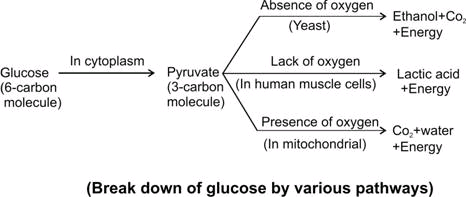
In text questions of page 105 ( Life Processes class 10 ) Chapter 6: Life Processes Science Class 10 solutions are developed for assisting understudies with working on their score and increase knowledge of the subjects. What advantage over an aquatic organism does a terrestrial organism have with regard to obtaining oxygen for respiration, Sketch a flow diagram for the various pathways for breakdown of glucose, How is oxygen and carbon dioxide transported in human beings, How are the lungs designed in human beings to maximise the area for exchange of gases is solved by our expert teachers. You can get ncert solutions and notes for class 10 chapter 6 absolutely free. NCERT Solutions for class 10 Science Chapter 6: Life Processes is very essencial for getting good marks in CBSE Board examinations
In text questions of page 105 ( Life Processes class 10 )
Question 1. What advantage over an aquatic organism does a terrestrial organism have with regard to obtaining oxygen for respiration?
Ans.Terrestrial organisms take up oxygen from the atmosphere whereas aquatic animals obtain oxygen from water. Air contains more O2 as compared to water. Since the content of O2 in air is high, the terrestrial animals do not have to breathe faster to get more oxygen. Therefore, unlike aquatic animals, terrestrial animals do not need adaptations for gaseous exchange.
Question 2. Sketch a flow diagram for the various pathways for breakdown of glucose.
Ans. 
Question 3. How is oxygen and Cardbon Dioxide Transported in human beings?
Ans. Haemoglobin present in RBC is respiratory pigment in Human being which transport Oxygen molecule. When this oxygen is used then blood becomes deoxygenated as it now contains CO2. As CO2 is dissolved in water so it is transported in dissolved form in blood.
Question 4. How are the lungs designed in human beings to maximise the area for exchange of gases?
Ans. Lungs contain millions of alveoli which provide a surface for the exchange of gases. An extensive network of blood vessels is present in the wall of the alveoli. By lifting our ribs and flatten the diaphragm, the chest cavity becomes spacious. Air is sucked into the lungs and alveoli. The oxygen from the breath, diffuses into the blood and CO2 from the blood brought from the body, diffuses out into the air.
Copyright @ ncerthelp.com A free educational website for CBSE, ICSE and UP board.